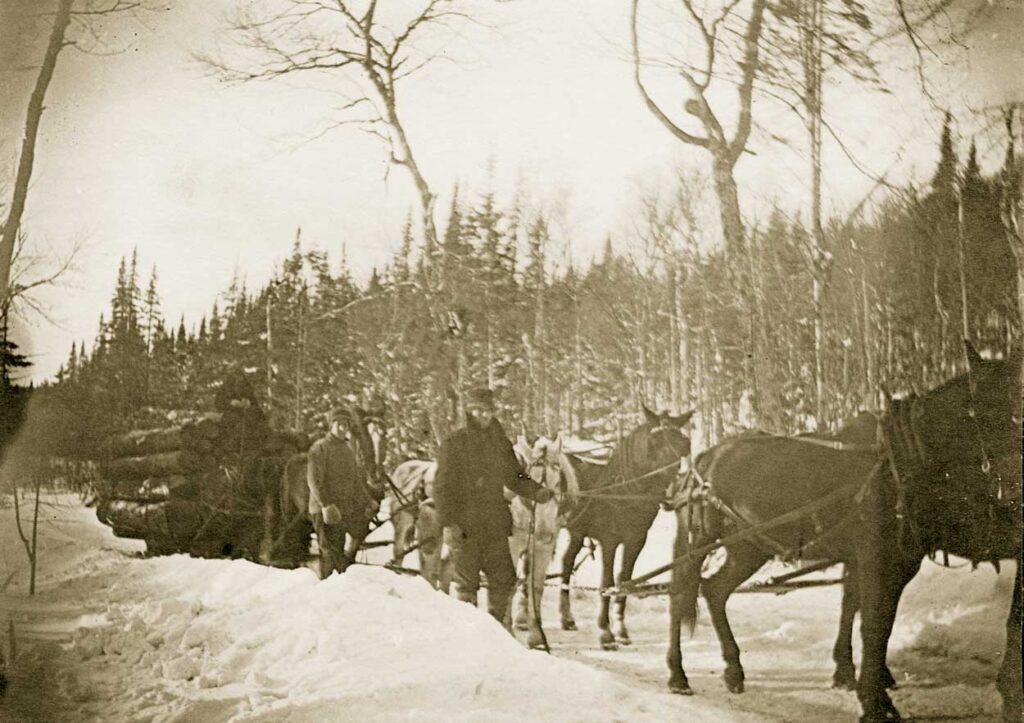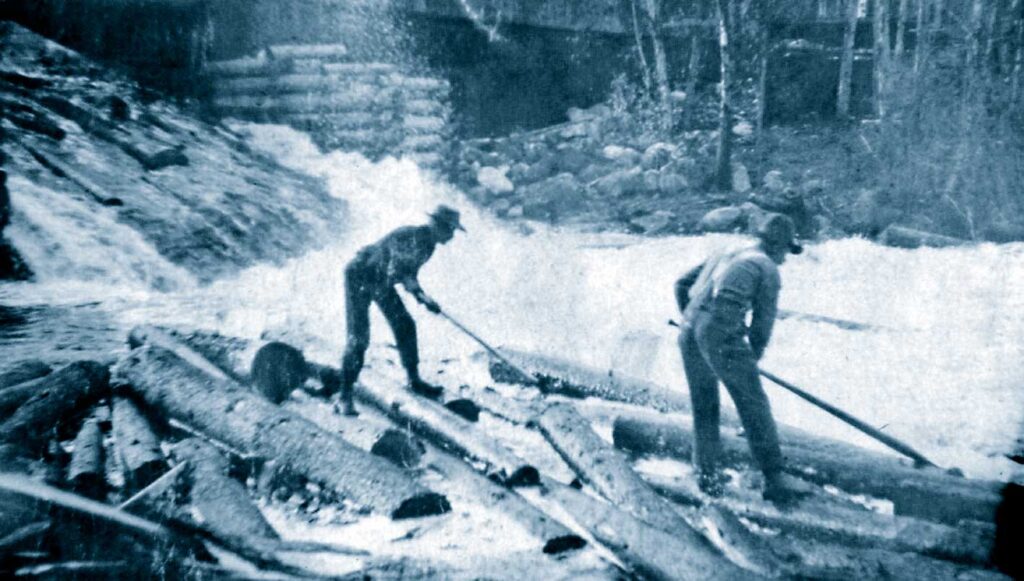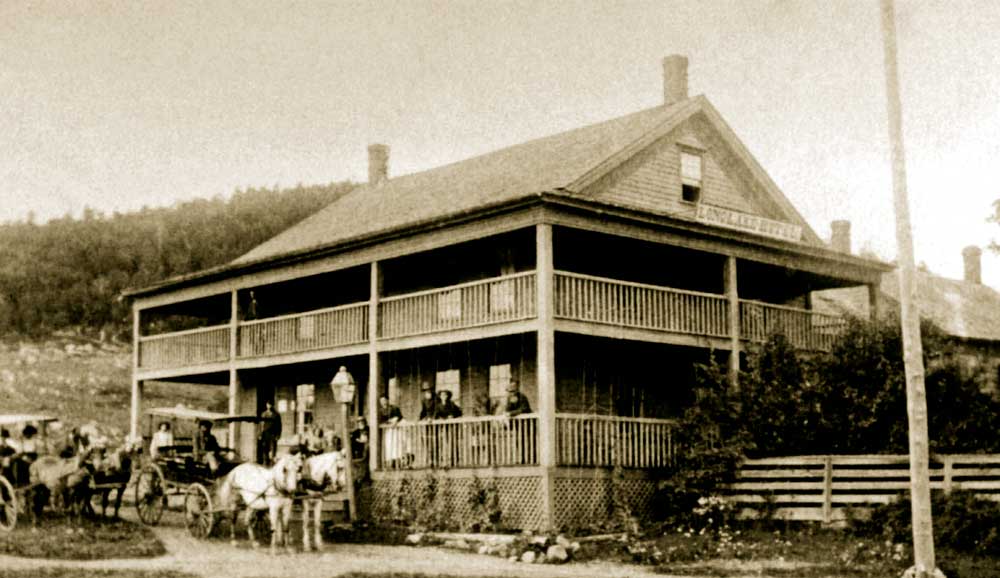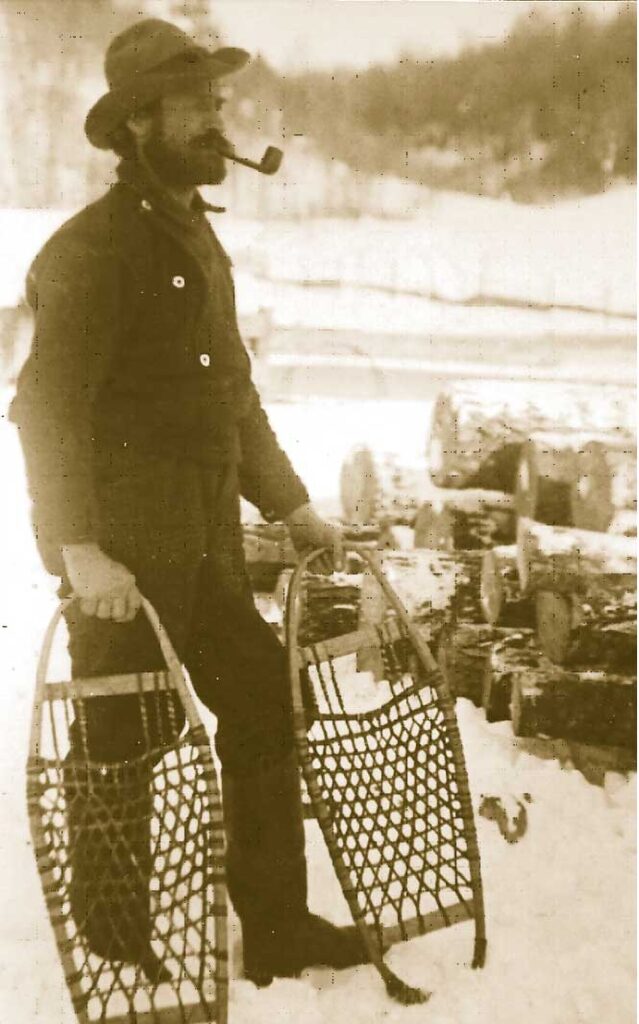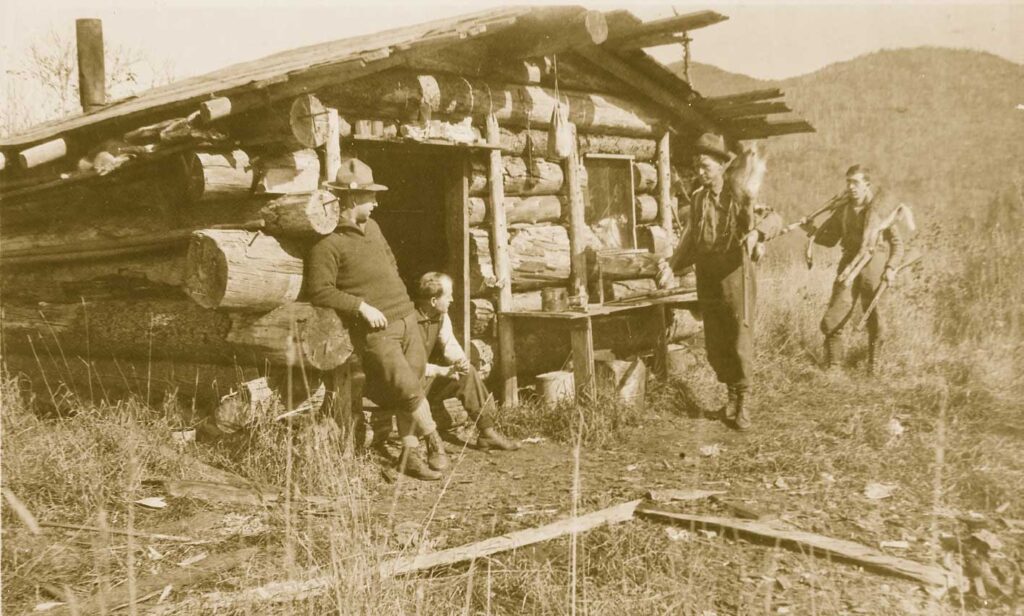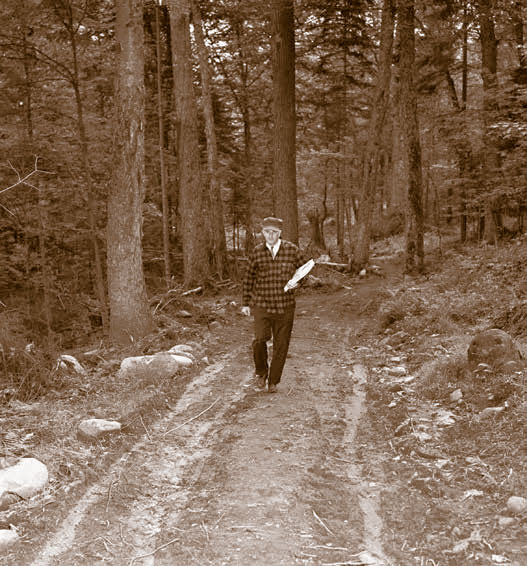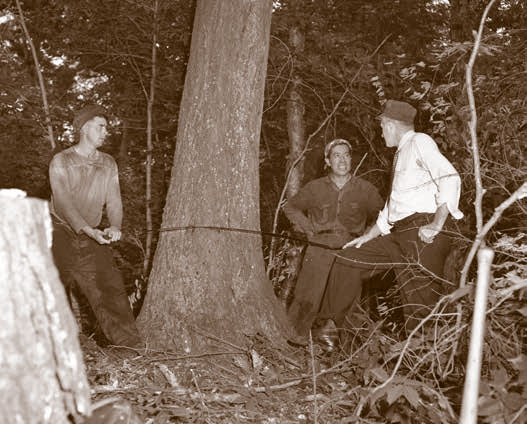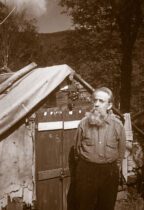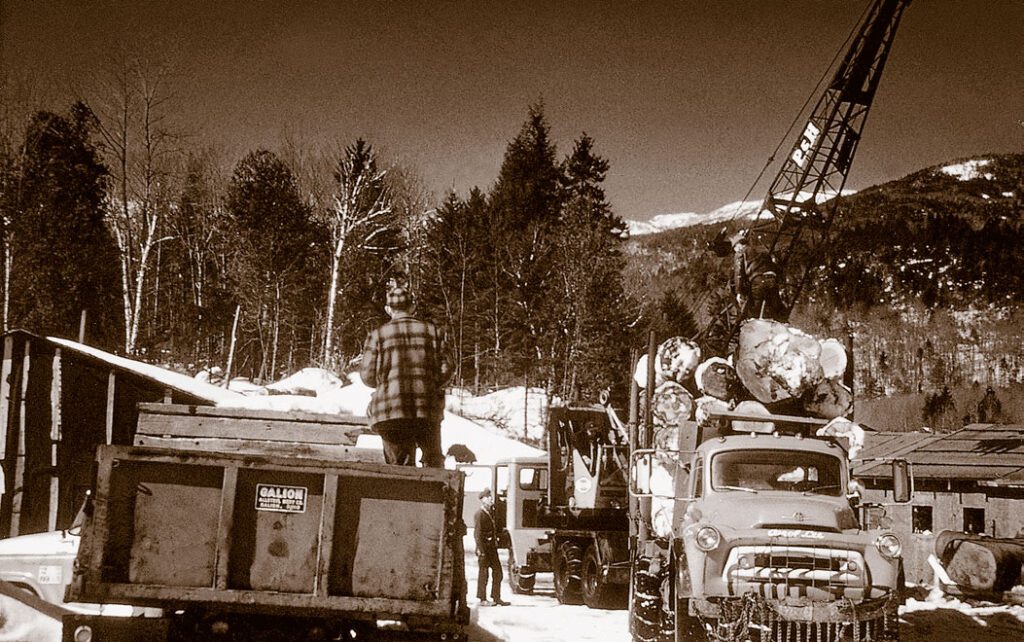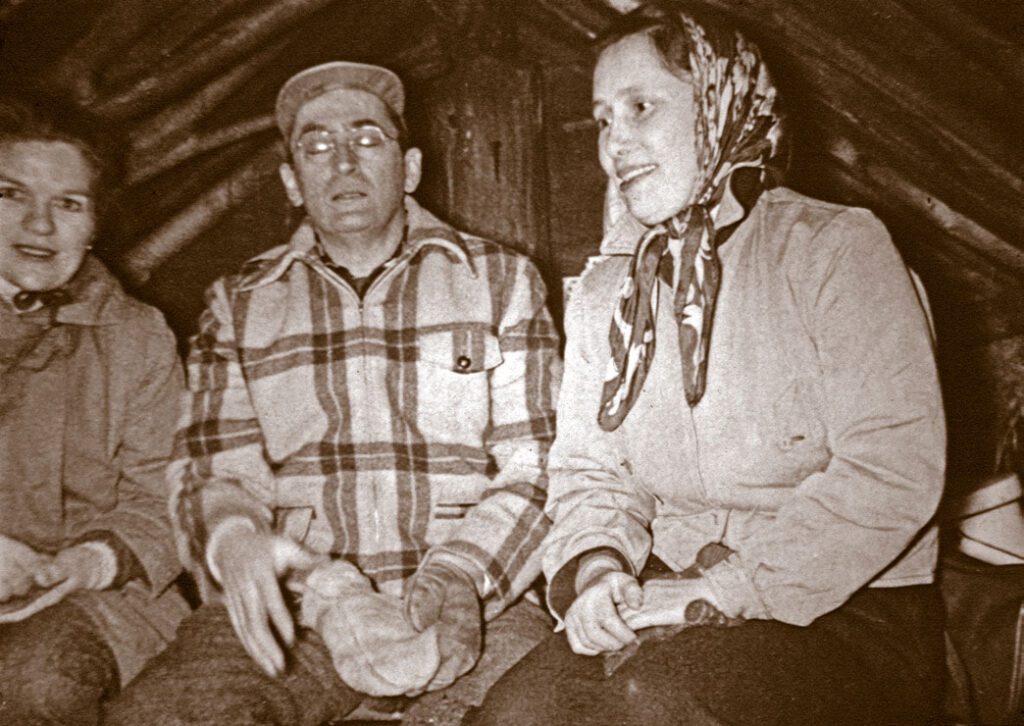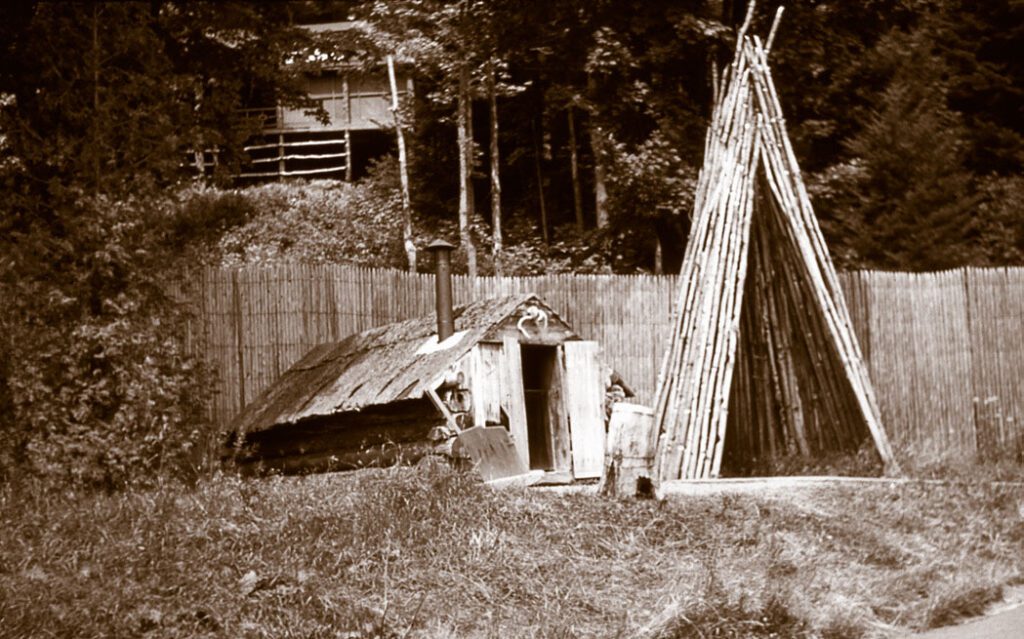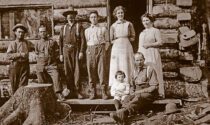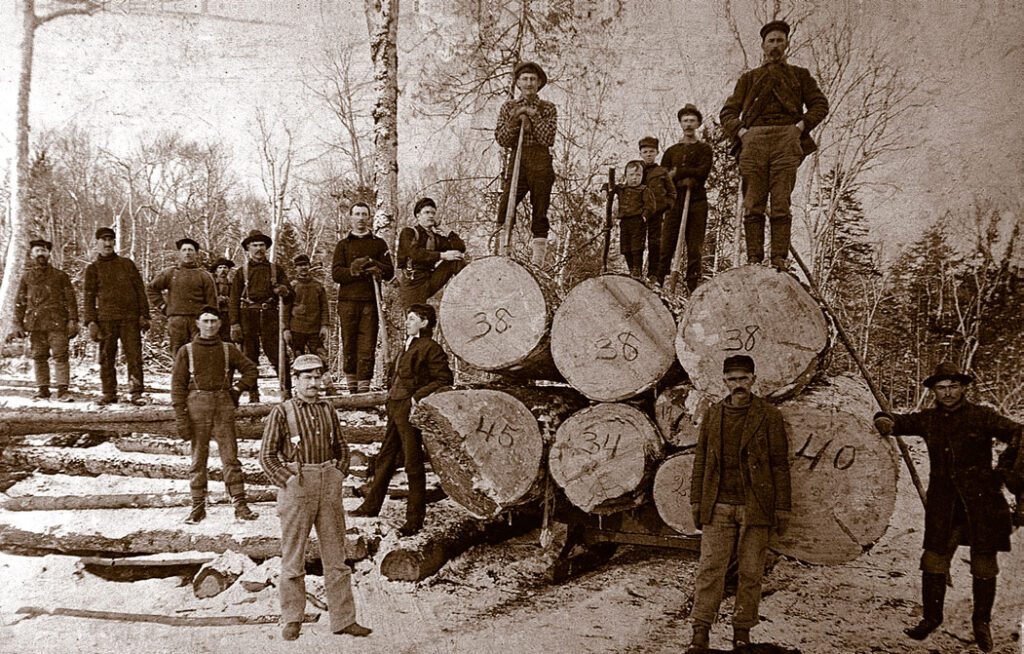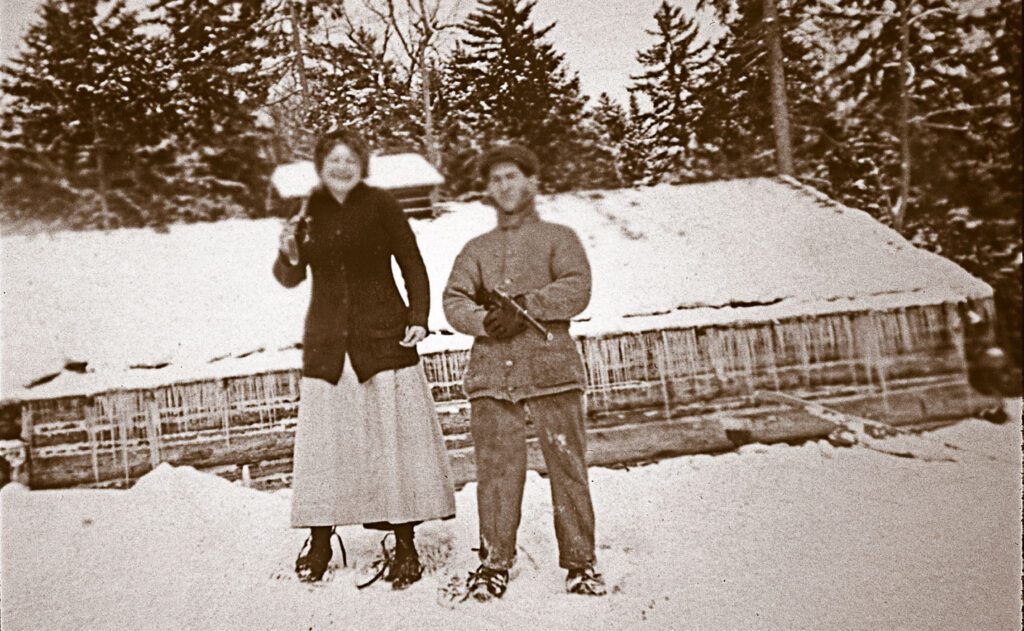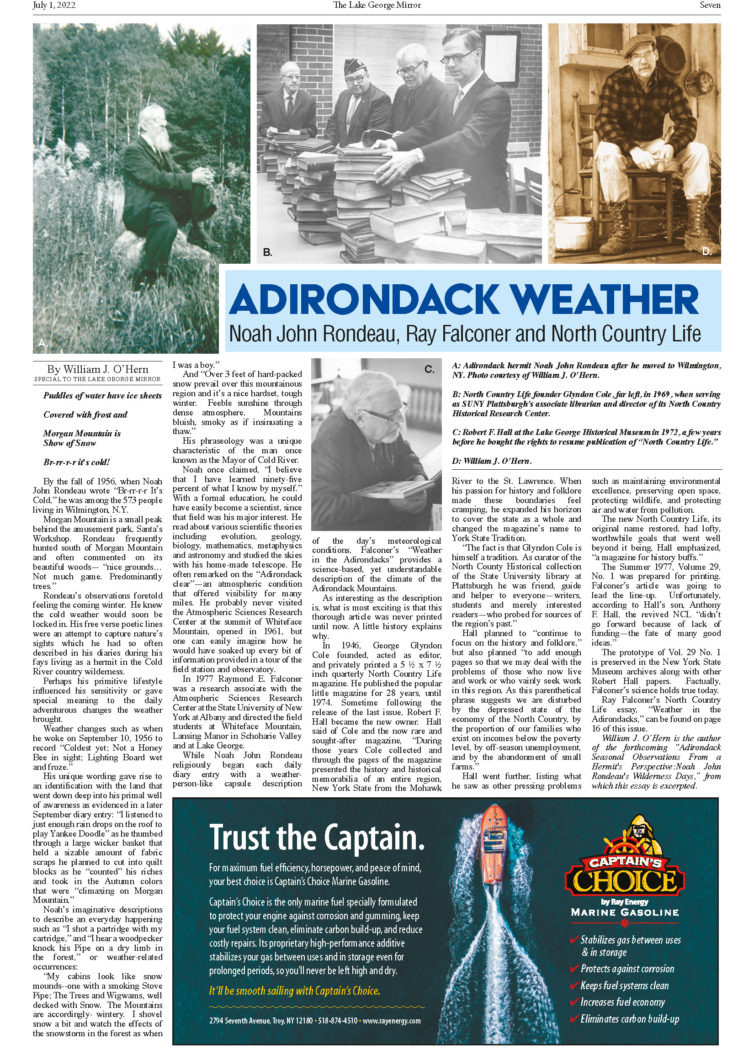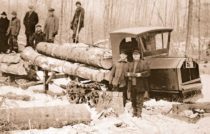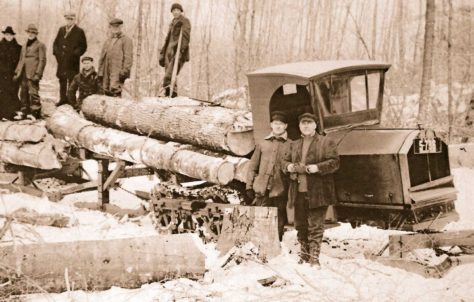By Howard Thomas
Published in Northern Logger, Oct. 2023
Sol Carnahan’s name is part of logging fame along with names like Dan McCauley, Jim McBeth, Tim Dunn, Henry Kreizer, Jim Hill, George Abbott, and John B. Todd – all charter members, for they were the great men of the river drives. The raw-bone men were familiar with river driving terms such as the “raw right-angled jam,” the “wing jam,” and the “key log,” terms not used in today’s logging operations.
These popular bosses, wrote Howard Thomas in Folklore from the Adirondack Foothills (Prospect Books, 1958), “had a flair for handling not only logs but men, from the stolid ‘pig-yokers’ who worked near shore to the flashy, temperamental riverjacks who risked life and limb in order to break jams and get the logs down the amber streams to the mills.”
Carnahan was born in McKinleyville, New Brunswick, Canada on March 17, 1878. As a young man he went to Maine and worked as a lumberman, eventually moving to northern New York where he began lumbering for himself. He operated logging camps in Wells, Speculator, Lake Pleasant, Wilmurt, Hinckley, Poland, and in the Black and West Canada river areas.
Mr. Carnahan was a Republican in politics, and while in Herkimer county operated a hotel in Noblesboro in the Town of Wilmurt and was active as a public officer. From 1890 to 1892 he was road commissioner in the Town of Wilmurt and in 1902 was supervisor for one term.
In 1908 Sol moved to Cooperstown where he carried on various lumbering jobs as well as owned and operated a large dairy farm until moving to Morris and then Guilford, where he continued work as an active farmer in Chenango county for 30 years until his death at the age of 70 in 1947.
“The Fabulous Carnahans” offers a unique look at a legendary logging personality. The story is among many collected by upstate New York folklore enthusiast, Howard Thomas. It appears here with permission of Bob Igoe, president and owner of North Country Books, Utica, NY.
– William J. O’Hern

Sol Carnahan came down from New Brunswick in the early 1890s to take charge of a log drive on West
Canada Creek. He was so homesick at first that he refused to answer letters from his relatives for fear that they would write back to him. He felt more at home when his wife and his two younger brothers, Ab and Erv, joined him in Wilmurt.
Sol conducted drives down West Canada Creek and the Black and Moose Rivers for years. No river boss ever
gained more respect from his men. When Sol retired to finish out his years on a farm near Cooperstown, the riverjacks and pig-yokers sensed that they had lost their dearest friend.
Sol knew his job from A to Z. In his younger days, he was so good at driving logs that he was rewarded with the highest praise given to a man in his profession – the nickname of “bubble-walker.” Though Sol could not swim a stroke, he probably took more chances than any riverjack in the foothills. To celebrate one Fourth of July at Bellingertown, he rode through the white water of a flooded Black River with his peavey held straight up before
him, and sailed under the bridge to the applause of a group of rivermen who had gathered to see his performance.

No foreman in the woods ever worked men harder than did Sol Carnahan, yet he won and held the admiration of them all. During the drive, he arose at three in the morning and rousted out his help. Sol’s men complained that they never saw daylight. One fellow claimed that when he went to bed he hung up his pants on the bedpost and they were still swinging when Sol woke him in the morning.
The men worked hard for Sol, for he paid better wages than did most jobbers, and food was plentiful. When the drive neared Northwood, Will Light used to come over from his hotel with steaming food which he served right on the shore of the creek. It is said that one hungry riverjack, smelling the food, forgot to ride the logs, but merely dove in and swam across the icy creek.
Sol also knew how to relax with his men. Trume Brown, who worked for Sol as a young lad and for years afterward, used to say that Carnahan was a bad actor when in the cups. Sol didn’t get disagreeable, but he let himself go with such wild abandon that he was the scourge of hotel keepers from Utica to Piseco, though they tolerated his shenanigans because he was such a good spender. On one occasion, when he and his jacks were drinking at the Bucket of Blood in Utica, Sol asked the proprietor casually, “What will you take for your damned bar, just for an hour?”
The canny proprietor set the price at five hundred dollars, whereupon Sol produced a roll of greenbacks that would have choked a cow, peeled off five hundred-dollar bills, and tossed them on the bar. Again, at the Mansion House, Sol spotted a piano and felt in the mood for singing shanties. Since neither he nor any of his men could play, he jumped up on the piano and pounded the keys with his boots, all the while roaring, “The Jam on Garry’s Rock.” When the hotel man protested that Sol had wrecked the piano, which was true, Sol sent his men to a music store and bought a new one. The proprietor tried to remove the old, battered instrument, but Sol cried, “That’s mine,” and continued to play with his feet and sing shanties until he almost dropped from exhaustion.
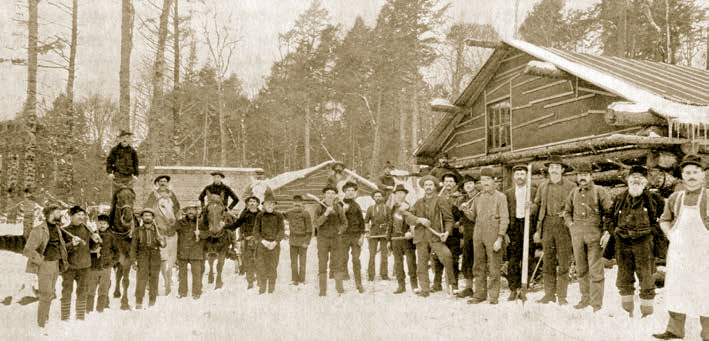
Sol’s most dramatic exploit occurred in Foote’s Hotel in Piseco, where lumberjacks were celebrating the culmination of a successful drive. Everyone seemed to be there but Sol, and the party was getting duller by the minute. Suddenly, without warning, the door burst open and Sol rode in on horseback, pranced up to the bar, and had his drinks while the bartender patted the horse’s nose.
Though Sol “palled around” with his men, he stood for no foolishness from them while on the job. If the creek was ready for the drive, he would send word to the Utica hotels that he would meet his men at Prospect station with buckboards at a certain time. The men always showed up so that Bill Hughes and Morey Platt could drive them from the station to the woods.
Tote-drivers were sent out frequently for supplies, and Jack Roberts, a burly fellow, usually got the assignment. Trume Brown used to tell how he and three other young fellows were delegated to go with Roberts to pick up a load of supplies which included a barrel of whiskey. On the way back, the men thought it would do no harm to tap the barrel and have a little drink. The pleasure proved so habit-forming that they lost all sense of time and direction. Three days later, they appeared at Sol’s camp, minus most of the whiskey. Sol resorted to quick justice.
Inasmuch as the barrel of whiskey had cost $125, he took $25 from the wages of each of the five men, amounts that constituted a whole month’s earnings.
Sol fitted in well with the locals around Wilmurt, where he ran a store. At a donation for the minister held in the Eureka House, he donned a white apron and served the guests. Folks up that way say no waiter at the Waldorf-Astoria could have done a better job than the river boss did on that occasion.
Sol’s younger brothers, Adam, commonly called Ab, then about twenty years old, and Erv, a year or so younger, joined Sol in Wilmurt, and their coming did much to settle his early discontent. They worked with Sol on drives and gave promise of developing into superior riverjacks. Ab, in particular, was becoming the best riverman who ever looked at the creek. Erv would have made better progress if he could have stayed away from the liquor. He kept a bottle under his bed and would start each day by taking a big swig of whiskey and eat his breakfast for a chaser.
To be continued.
Look for Part 2 in the next issue.
